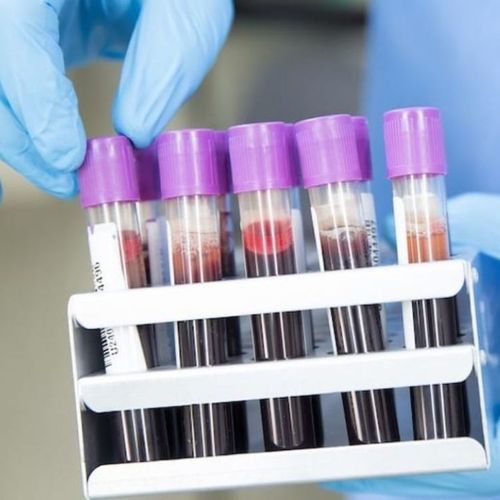Even if they're otherwise health-savvy, few patients know as much as they should about diagnostic blood and urine tests.
Result: Patients are less able to help spot errors that could lead to a physician's misdiagnosis and/or inappropriate treatment. Key facts...
Laboratory Tests
The complete blood count (CBC) measures the number of cells in your blood. Hundreds of diseases can cause abnormalities in these counts, including infections, some cancers and blood disorders.
Urinalysis evaluates the appearance and chemistry of your urine. Abnormalities can signal kidney disease, urinary tract infections, some types of cancer or diabetes.
You should review your lab reports with your physician. Keep a copy of each report in your files to compare it with past or future results.
Printouts of lab reports include a reference range, the statistically normal values for a person your age.
What most people don't know: Some people are what pathologists call outliers-that is, even though healthy, they have slightly higher or lower values in one or more categories. Further testing typically is required.
Interpreting The CBC
A CBC may be ordered prior to surgery and/or for evaluation of an infection, fatigue, fever, anemia, cancer or heart disease. The CBC analyzes white blood cells (WBCs), red blood cells (RBCs) and platelets, all of which are produced in the bone marrow. Most important measurements...
WBC count. WBCs battle viruses, bacteria and any other infectious agents. They are measured in thousands per cubic millimeter (K/mm3) of blood.
Normal range: 4.0 to 11.0.*
WBC differential. This measures the relative percentage of five different types of WBCs-neutrophils (which fight bacterial infection). ..basophils and eosinophils (they play a role in allergic responses). ..and lymphocytes and monocytes (which develop when there is an immune response to many infections). Ask your doctor for your normal ranges.
Absolute neutrophil count (ANC). This uses a formula involving polys (mature neutrophils) and bands (young neutrophils). A decreased ANC can signal bone marrow failure, while a high ANC is seen when there are infections and some leukemias.
Normal range: 38% to 78% of all WBCs.
What your results may mean: WBCs that fall outside the normal range could signal an infection...a disorder of the bone marrow...or an allergy.
RBC count. RBCs carry oxygen to and remove carbon dioxide from the tissues. They are measured in millions per cubic millimeter (mil/ mm) of blood.
Normal range: 4.5 to 6 for men. ..4.2 to 5.4 for women.
Hemoglobin (HGB) value. Hemoglobin is the protein that carries oxygen. It is measured in grams per deciliter (g/dL) of blood.
Normal range: 13.5 to 17.5 for men. . .72 to 76 for women.
Hematocrit (HCT) value. HCT is the percentage of your blood that consists of RBCs. A decrease in HCT indicates anemia, which can result in not enough oxygen being delivered to the tissues.
Normal range: 40% to 52% for men...37% to 47% for women.
What your results may mean: RBCs that fall outside the normal range are a sign of anemia, bleeding, some cancers, bone marrow disease or a drug side effect, typically from chemotherapy.
Platelet count. Platelets form clots and stop bleeding. They're measured in thousands per cubic millimeter (K/mm3) of blood.
Normal range: 150 to 400.
What your results may mean: Platelet counts that fall outside the normal range can be a sign of leukemia, thrombocytopenia (too few platelets), rare congenital disorders or a drug side effect.
Interpreting Urinalysis
If you complain of low back pain, painful or frequent urination, or discover that you have dark or bloody urine, your physician should order a urinalysis. Most important components...
Protein. Normally, the kidneys do not allow protein to leak into the urine. The presence of high levels of protein-greater than 10 milligrams (mg) per 100 milliliters (ml)-suggests an abnormality, such as kidney disease. If a high protein level is found, other kidney function tests, such as creatinine, should be ordered.
Glucose. Excess levels of glucose indicate diabetes. If you have high glucose, your doctor should order a blood glucose test and other diabetes screening tests, such as hemoglobin A1C.
Nitrite. High levels of this compound indicate a urinary tract infection.
Leukocyte esterase. When present in the urine, this enzyme (produced by white blood cells) may indicate an infection.
Casts. The presence of casts (cellular deposits that are formed in the kidneys) and their specific type can indicate many problems, including kidney disease and diabetes.
Crystals. When present in small numbers, most crystals, such as those made of calcium oxalate, are not significant. Others, such as crystals of the amino acid leucine, can indicate severe liver disease.
RBCs. High levels of RBCs in the urine can indicate trauma to the kidney or urinary tract, cancer or urinary tract infections.
Preventing Errors
The automated instruments that are used to analyze blood are precise, and most CBCs are accurate. Similarly, few mistakes are made in a typical urinalysis, but errors can occur.
Best ways to avoid lab errors..
Make sure your doctor or hospital uses an accredited lab. Yearly inspections are required for labs that are accredited by various organizations, such as the College of American Pathologists. To find out if a lab is accredited, ask the lab or hospital administrator.
Don't assume that your tube is labeled correctly. Mix-ups can occur. Ask the lab technician, How did you label the tube?
Even better: Ask politely to see the tube, so you can be sure it has your name on it.
Check for clots. If blood takes more than two minutes to fill the tube, it will clot in the process. This renders it useless for a CBC. Ask the lab technician, Does my tube have any clots in it?
Even better: Ask to see the tube, and tilt it gently. If there's a large clot, you'll see it.
